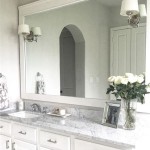Can You Put a Mirror on a Pocket Door?
The concept of integrating a mirror onto a pocket door presents both intriguing design possibilities and practical challenges. While the sleek, space-saving nature of a pocket door combined with the functionality and aesthetic appeal of a mirror can be highly desirable, several factors must be considered before undertaking such a project.
One primary concern is the added weight a mirror introduces to the pocket door system. Pocket doors rely on a delicate balance of weight and smooth operation within their tracks. A standard mirror, especially a large one, can significantly increase the door's overall weight, potentially straining the hardware and leading to issues like derailment, difficulty in sliding, or premature wear and tear of the system. Therefore, careful assessment of the existing hardware’s weight capacity is crucial. Reinforcing the track system and replacing rollers with heavier-duty versions may be necessary to accommodate the added weight.
The type of mirror chosen also impacts the feasibility and success of this project. Thin, lightweight mirrors, such as acrylic or specialized lightweight glass options, present a less burdensome weight addition compared to traditional thicker glass mirrors. While these lighter alternatives offer a solution to the weight issue, they might be less durable and more prone to scratches or warping. The selection should reflect a balance between weight considerations and the desired longevity and quality of the mirror.
The dimensions of the mirror relative to the door are another vital consideration. A mirror that extends to the very edges of the door can interfere with the door's movement within the pocket cavity. A small gap, typically around 1/8 inch, should be maintained around the perimeter of the mirror to ensure smooth operation and prevent the mirror from scraping against the frame or interior of the wall. This space also allows for slight expansion and contraction of the door due to temperature and humidity fluctuations.
The method of attaching the mirror to the door requires careful consideration. Traditional adhesive methods might not be suitable due to the constant movement and vibrations a pocket door experiences. Specialized mirror adhesives designed for dynamic applications, combined with mechanical fasteners like clips or brackets, offer a more secure and robust solution. The chosen method should distribute the weight evenly across the door’s surface to minimize stress points and prevent the mirror from detaching.
The structural integrity of the door itself plays a significant role. Hollow-core doors, commonly used for interior applications, might not provide sufficient support for the weight of a mirror, especially a larger one. Solid-core doors or reinforced hollow-core doors offer better stability and are more suitable for this type of modification. Examining the door's construction is essential before proceeding with mirror installation.
Framing the mirror can contribute to both aesthetic appeal and structural reinforcement. A well-constructed frame can help distribute the mirror's weight more evenly across the door and provide additional support against flexing or warping. It can also protect the edges of the mirror from chipping or damage. The frame material should be lightweight yet durable, complementing the overall design and adding minimal extra weight to the door.
Professional installation is often recommended for this type of project. Experienced installers possess the knowledge and tools to assess the door's suitability, choose appropriate hardware and adhesives, and ensure proper installation to minimize potential problems. They can also advise on the best mirror type and framing options to meet specific needs and design preferences. While a DIY approach is possible, it requires careful planning, precise measurements, and a thorough understanding of the involved mechanics.
Regular maintenance is essential to ensure the long-term functionality and safety of a mirrored pocket door. Periodically checking the track system for obstructions or damage, lubricating the rollers, and inspecting the mirror’s attachment points can help prevent issues and prolong the system's lifespan. Promptly addressing any signs of wear or damage can prevent more significant problems from developing.
The nature of the wall cavity where the door retracts also influences the feasibility. Obstructions within the wall, such as electrical wiring or plumbing, might limit the available space and necessitate modifications to accommodate the added thickness of the mirror. Careful inspection and possibly consultation with a building professional may be required to assess the wall cavity and address any potential conflicts.
The overall aesthetic impact should be factored into the decision-making process. While a mirrored pocket door can enhance the sense of space and light in a room, careful consideration should be given to the reflection it creates. Positioning the door and considering the surrounding furnishings and décor can optimize the visual effect and prevent undesirable reflections or glare.

Mirrored Pocket Door Jack And Jill Bathroom Update Sawdust Girl

Mirrored Pocket Door Jack And Jill Bathroom Update Sawdust Girl

Mirrored Pocket Door Bathroom Design Remodel Master Doors

Bathroom Idea Add A Full Length Mirror Into Madison Hollow Pocket Door From Home Depot Geniu Small Remodel Bathrooms Doors

Mirror Pocket Door

Ponder Mirror Single Pocket Door Rustica

Mirrored Pocket Doors Transitional Bathroom New York By Kraftmaster Renovations Houzz

Ponder Mirror Single Pocket Door Rustica

Custom Pocket Door With Full Length Mirror Fusion Bathroom Newark By Kraftmaster Renovations Houzz

Pocket Full Of Doors What To Know About Newhomesource








